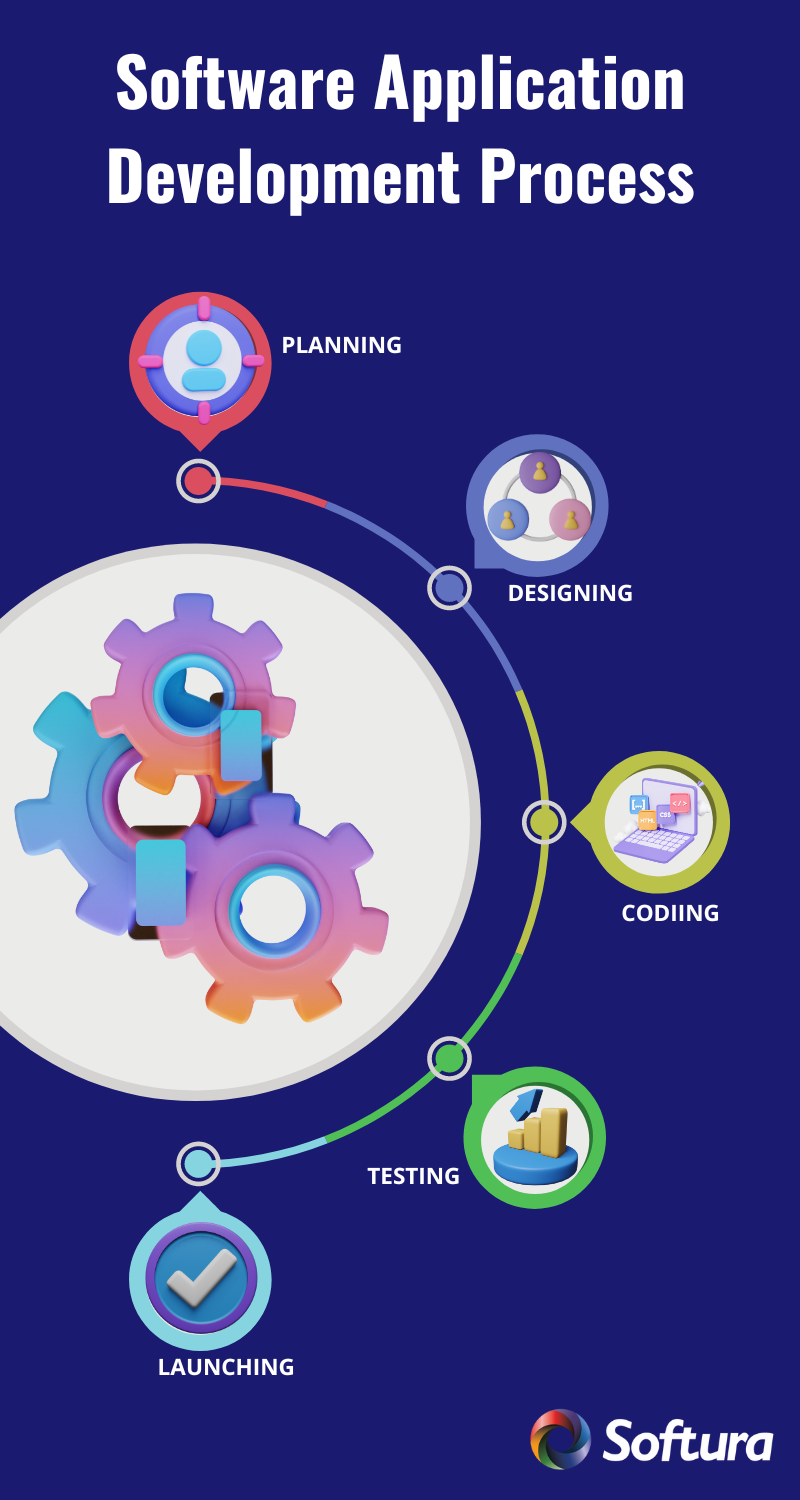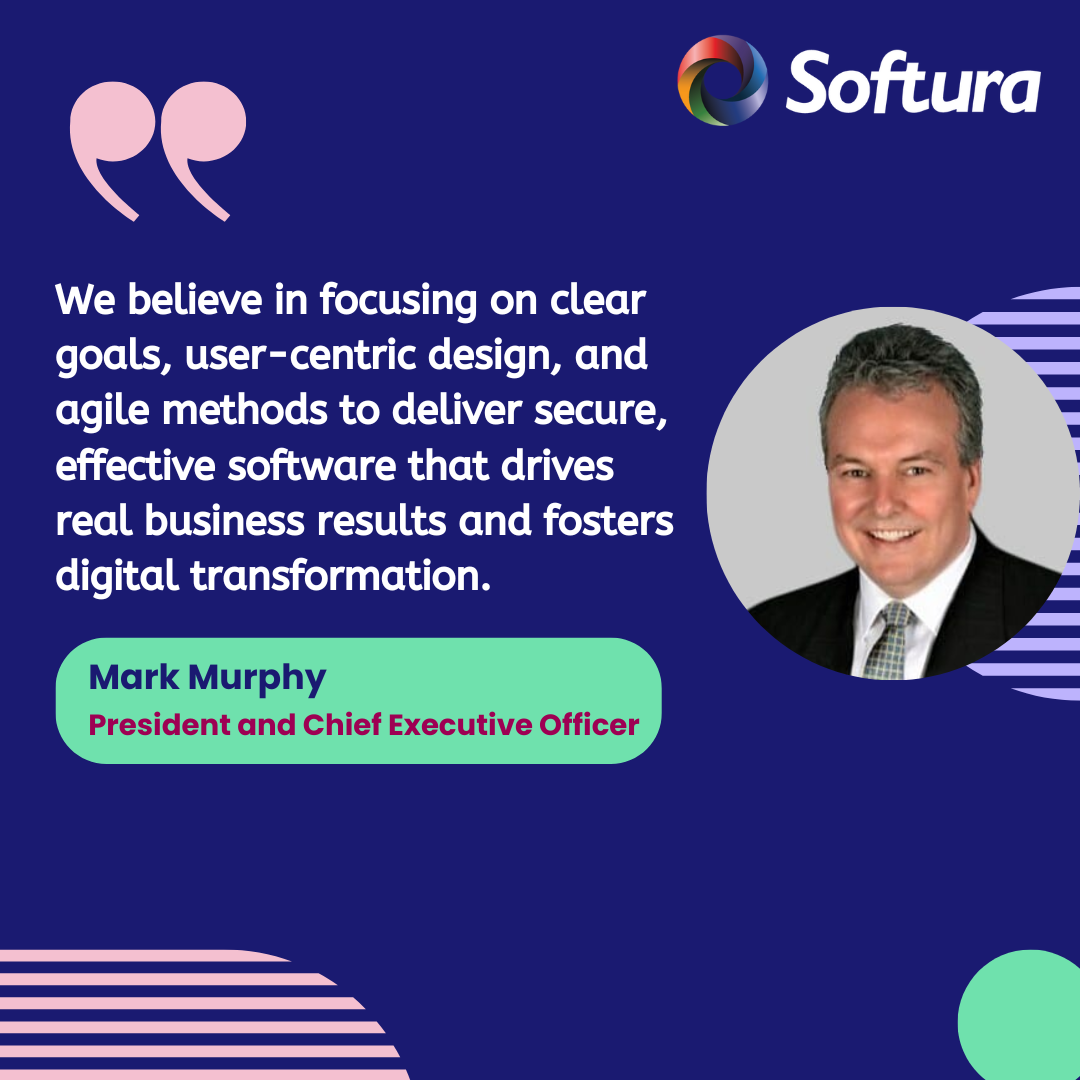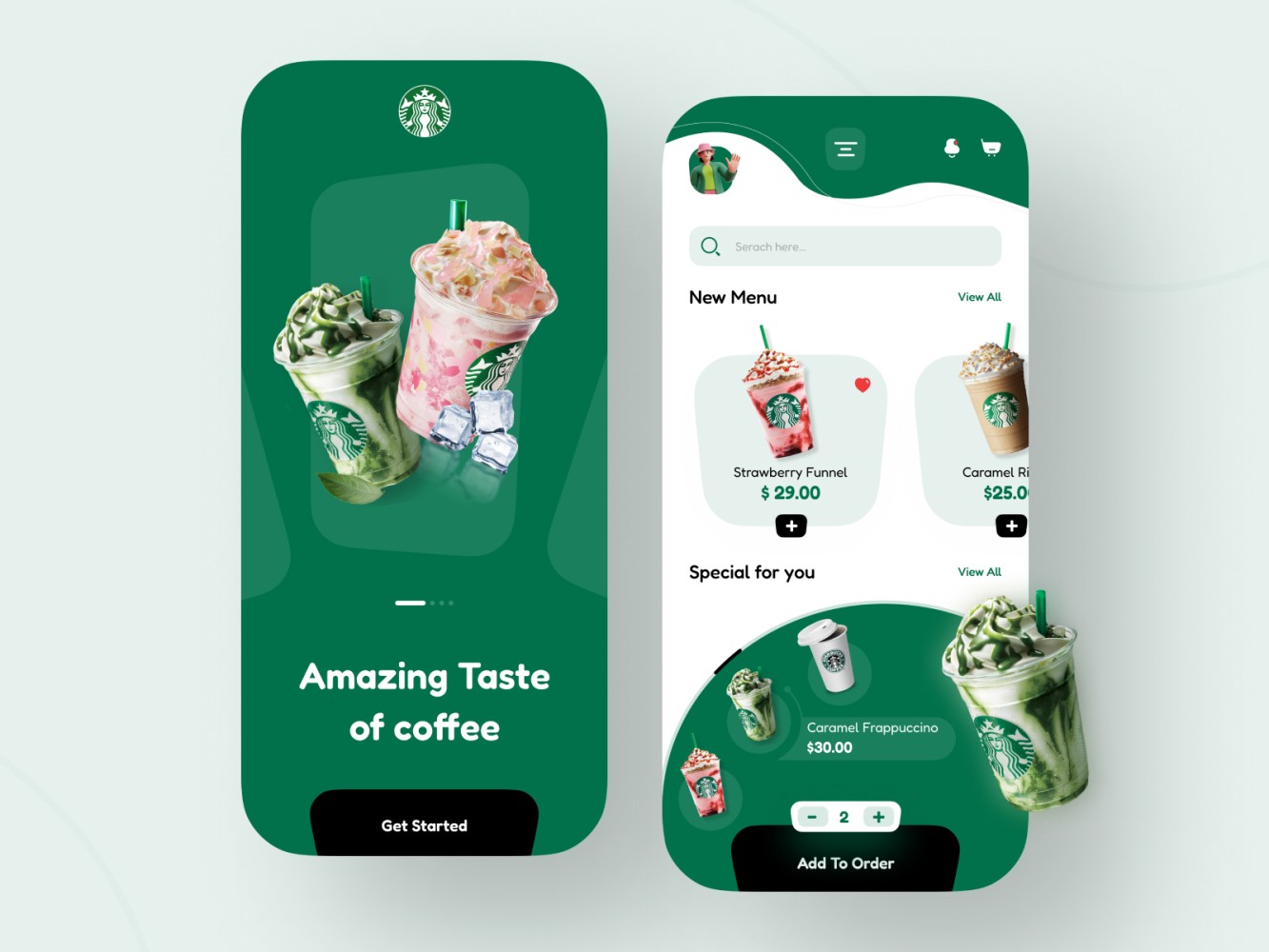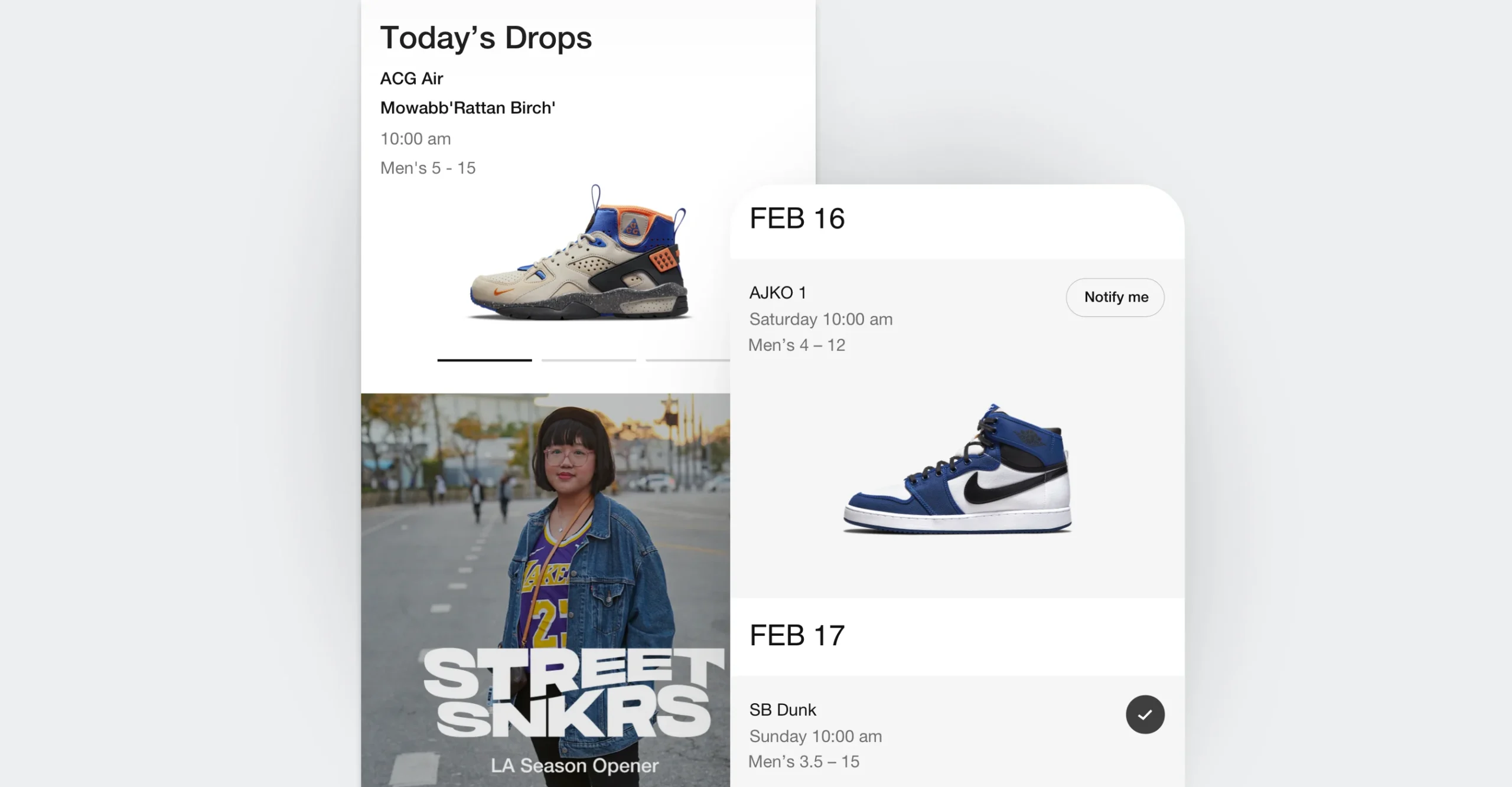"Our integration with the Google Nest smart thermostats through Aidoo Pro represents an unprecedented leap forward for our industry."
- Antonio Mediato, founder and CEO of Airzone.

Whether you're a startup venturing into app development for the first time or an established business seeking innovation, this guide equips you with the crucial knowledge required to sail through the app development journey.
Let's get started.
Software application development is building software that works on a variety of digital devices. This is important for modern businesses that want to be flexible and reach a wide audience. This process consists of several strategic steps: planning the structure of the application, creating the design, writing the code for the software, testing it thoroughly to make sure it works, and finally releasing the product on the market.
These applications range from simple tools that boost output to complicated systems that run businesses. They help people do their jobs more efficiently and make learning easier. They can be used on many devices, including smartphones, the web, and the cloud. Every application is made to meet specific goals and the wants of each business and user.
"Our integration with the Google Nest smart thermostats through Aidoo Pro represents an unprecedented leap forward for our industry."
- Antonio Mediato, founder and CEO of Airzone.
Here’s a breakdown of the key steps involved:
Planning: It's the blueprint phase. Think about what your app aims to achieve and who it’s for.
Designing: This is where creativity meets strategy. Sketch out how your software looks and feels.
Coding: The nuts and bolts. Developers bring your idea to life with lines of code.
Testing: Ironing out the kinks. Ensure your app works smoothly across all scenarios.
Launching: Time to go live! Introduce your software to the world and start gathering feedback.
Maintaining: Keep it running. Regular updates and fixes keep your app fresh and functional.
Each step is a milestone, from initial brainstorming to the final launch. Regardless of the complexity involved in the project, understanding the above software application development life cycle puts you a step ahead.

"By analyzing the data from our connected lights, devices and systems, our goal is to create additional value for our customers through data-enabled services that unlock new capabilities and experiences."
- Harsh Chitale, leader of Philips Lighting’s Professional Business.
Mobile application development is about building apps for smartphones and tablets. Now that people can easily afford such gadgets, mobile application development has become much needed for businesses.
It includes making native apps for platforms like iOS and Android as well as cross-platform apps that can be used on more than one operating system.
Web application development is the process of building applications that can be used in web browsers. There are easy websites as well as more complicated web-based tools and services in this group. Languages like HTML, CSS, JavaScript, and server-side languages like Python, PHP, and Ruby are often used to develop them.
Cloud application development refers to building applications that run in a cloud computing environment. These apps use cloud services, which makes them scalable, flexible, and cost-effective. Cloud apps are often made with technologies like Docker, Kubernetes, and other cloud-native tools, and they can be accessed from anywhere.
Source: Markets and Markets
Here’s how to steer your software application development towards success, reaping rewards all through the way.
Start With Clarity: Make it clear from the start what the goals of your app are and who it's meant for. This makes sure that every choice you make is in line with your goals. As a result, it saves time and resources and makes the app more useful to the people you want to use it.
User-Centric Design: Make the user experience easy to use and interesting. This approach makes users happier, more interested, and more likely to encourage your app, which has a direct effect on its success.
Agile Approach: Using an agile method lets you be flexible with your growth and make quick changes based on feedback. This makes the end product better and keeps development teams engaged and working hard.
Tech Stack Savvy: Choosing the right technology stack for your app will make sure it can grow, is easy to manage, and works as expected. It lowers running costs and technical debt in the future, which makes the business more viable in the long term.
Quality Assurance: Test your app thoroughly to make sure it works well and doesn't have any bugs. Users trust high-quality apps more, which leads to more engagement and good reviews, both of which are important for getting apps seen and used.
Security First: Building strong security into the system from the start keeps user info safe and builds trust. In a time when data breaches can ruin names in an instant, putting security first can give you a big edge over your competitors. With the digital landscape witnessing a 20% surge in data breaches from 2022 to 2023, the importance of embedding strong security features cannot be overstated. This alarming increase in breaches saw a doubling of global victims in 2023 and a notable 77% rise in ransomware activity in the Middle East.
Feedback Loops: Asking for and using user comments helps make the app better all the time. This ability to change can make users happier, more loyal, and more likely to spread the word, which leads to spontaneous growth.
Post-Launch Plan: Making a plan for changes and customer service after launch will make sure that your app stays useful and important over time. Support and changes that are always available can keep users coming back and keep them from leaving.
Measure Success: You can tell how well your app meets its goals by setting KPIs and keeping an eye on them. With this knowledge, you can make choices based on data that can boost speed, the user experience, and, in the end, your profits.

Apps provide a direct channel to engage with customers and offer personalized experiences.
The Starbucks mobile app is a great example of how to get customers more involved. The app makes the customer experience more personal by letting users plan ahead, pay in-store, and earn benefits.
The Starbucks points program is built into the mobile app. It offers savings and free drinks to loyal customers. The app's success is obvious in its substantial addition to Starbucks' sales, with a large part of orders being made through the application.

Applications can automate and streamline business processes, thus driving productivity.
Domino's app has changed the way people order pizza and has made the process much more efficient. It's possible for customers to buy pizza online through a mobile app, website, social media, or smart devices.
This technology cuts down on order mistakes, speeds up the buying process, and makes customers happier.
Domino's is now more competitive in the fast-food market thanks to its efficient method, which has also helped the company do better overall.
Unique and innovative applications can set a business apart in the marketplace.
Nike has gained a competitive advantage through its Nike+ and SNKRS apps. The Nike+ app offers personalized training plans, tracks fitness progress, and integrates with Nike's product line, encouraging users to purchase Nike products. The SNKRS app creates an exclusive and engaging experience for sneaker enthusiasts, offering early access to new releases and limited-edition products. This exclusivity and integration with the brand's core products help Nike stand out in the highly competitive athletic apparel and footwear market.
With its Nike+ and SNKRS apps, Nike took a huge leap ahead of its competitors.
The Nike+ app lets users create their own workout plans, keep track of their fitness results, and connect to Nike's goods. It makes users more likely to buy Nike products.
Sneaker fans can get early access to new models and limited-edition items through the SNKRS app, which makes the experience unique and fun.
Nike stands out in the very competitive market for sports shoes and clothes because these items are only available from the brand and are designed to work with its main goods.

Now, the most important part.
Understanding the cost of software application development is crucial for budgeting and planning. You should not go broke by the time the software is released. So, here’s a breakdown to help you deal with the financial waters:
The cost of your app goes up as its complexity goes up. A few thousand dollars might be enough to build a simple app, but multi-platform apps with lots of features can cost hundreds of thousands of dollars.
A custom design that is easy to use costs money. Designing your app well not only makes it stand out, but it can also have a big effect on how much it costs to make.
The tools you choose to use to build your app affect how much it costs altogether. New expensive technologies may give you an edge in the market.
Your budget will be affected by whether you hire a local team, outsource to another country, or do a mix of the two. Cost savings might be possible with offshore development teams, while better knowledge and connection might be possible with local teams.
Don't forget the costs that come after start. For your app to stay useful and functional, it needs regular changes, bug fixes, and customer help, which adds to the overall cost.
Making apps for iOS, Android, and the web all at the same time costs more and gets them in front of more people. Think about the people you want to reach to decide if going with a multi-platform method is worth the extra money.
You must make sure that your app meets all legal and safety requirements. This important step can cost more, but it's necessary to protect your people and your business.
Setting up and training an in-house team to manage all these processes can be very expensive and time-consuming. Outsourcing the requirements to an offshore development team that takes complete care of the entire cycle usually saves huge budget and time.
After reading about the costs, it's clear that putting together and managing an in-house team to make software can be expensive and take a long time. As a result, we need to think about the advantages of collaborating with an offshore software application development team.
One of the best reasons to go overseas is that it can save you a lot of money. Lower labor costs in many foreign places can cut development costs by a huge amount without lowering quality.
Offshoring lets you hire skilled coders and other professionals from around the world. This global talent pool makes sure that your project gets the best skills and most creative ideas.
Because of differences in time zones, foreign teams can work on your project outside of normal business hours. This could shorten the time it takes to build a product and get it on the market faster.
With offshore development, you can change the size of your team depending on the needs of the project. This way, you only pay for the resources you use, when you use them.
If you hire an overseas team to build your software, your in-house staff can focus on the most important parts of your business, which will help you be more efficient and come up with new ideas.
Though offshore development has a lot of benefits, it's very important to pick the right partner to outsource your requirement.

Softura, the custom software application development company, has been in business for more than 25 years. We are a Microsoft Certified Gold Partner, which means that every project we work on has a wealth of result-driven expertise.
With over 450+ engineers, we are committed to using Agile methods, which means that we can be flexible and adaptable during the whole development process.
Other key attributes of Softura:
Set up a free meeting with one of our experts to get software development plans that are tailored for your business needs.